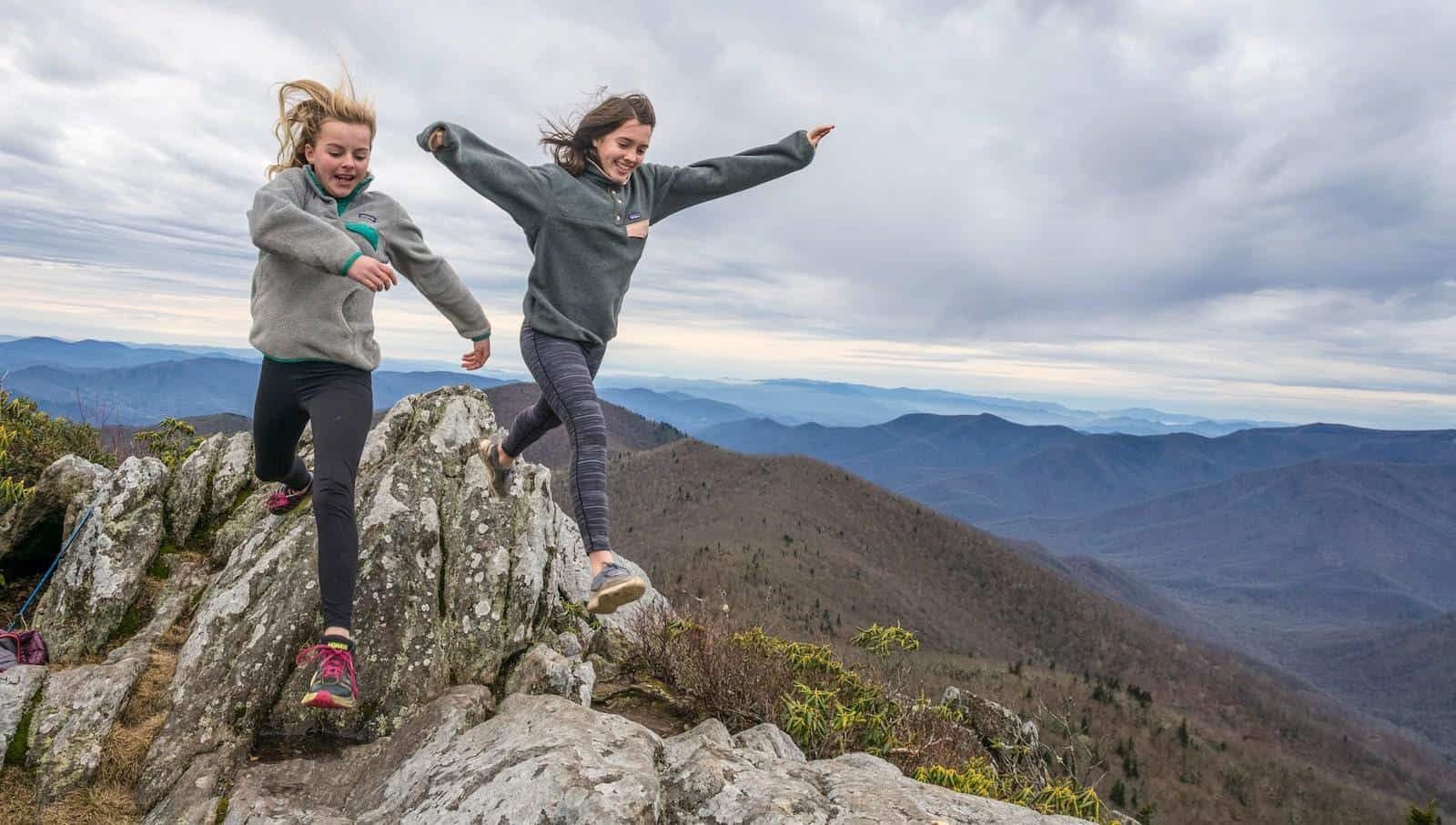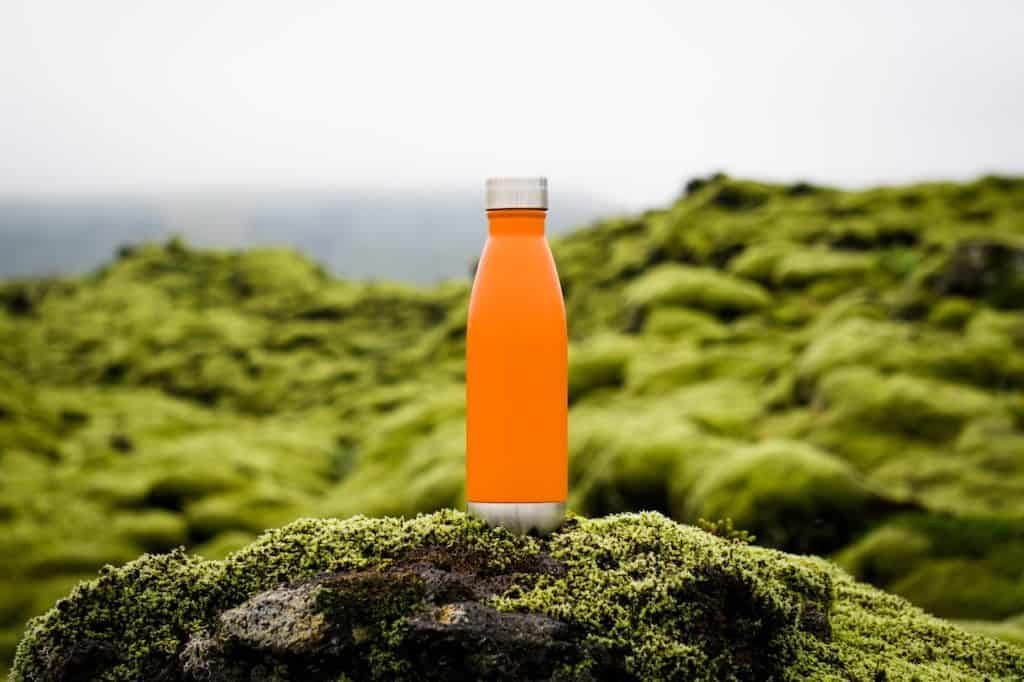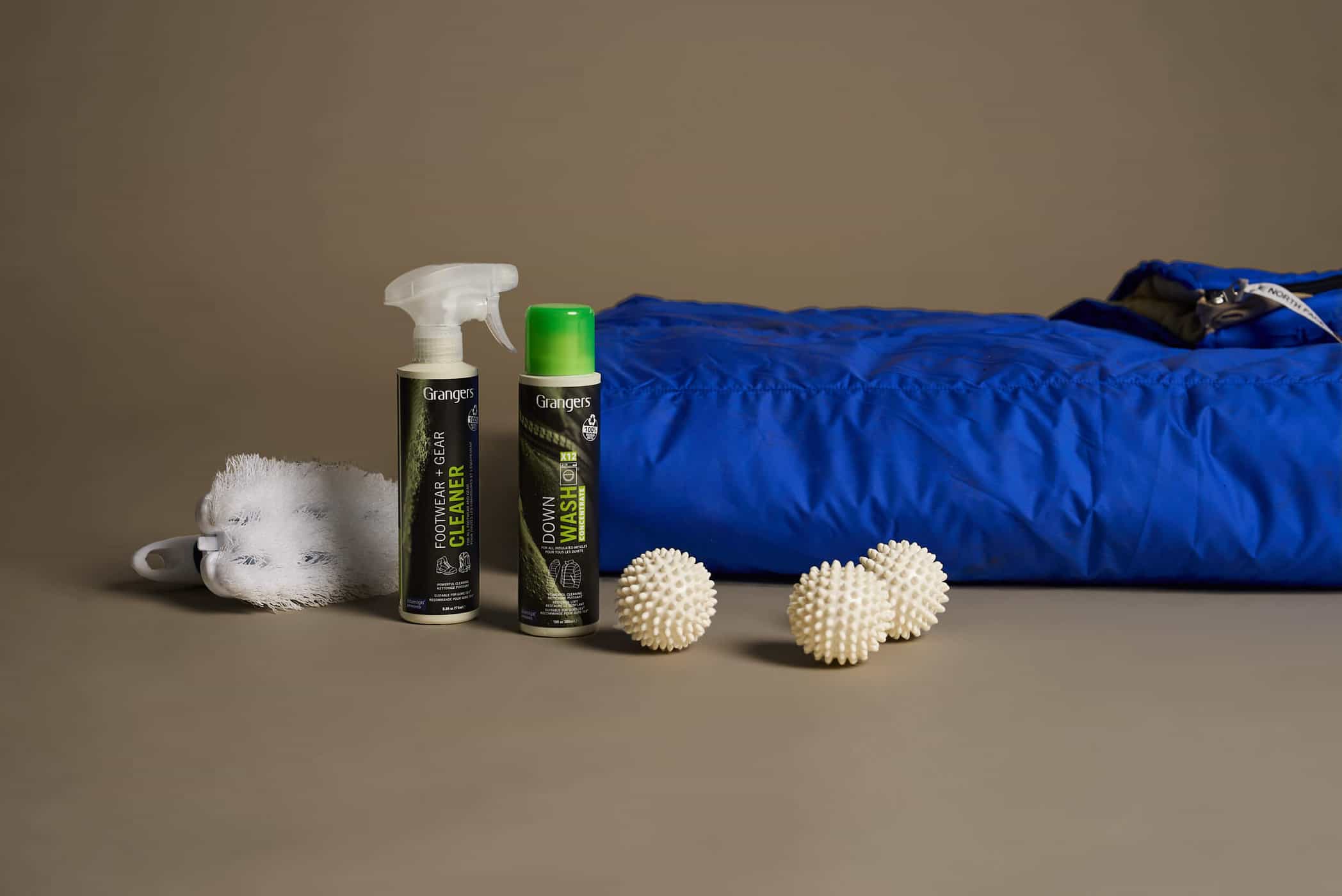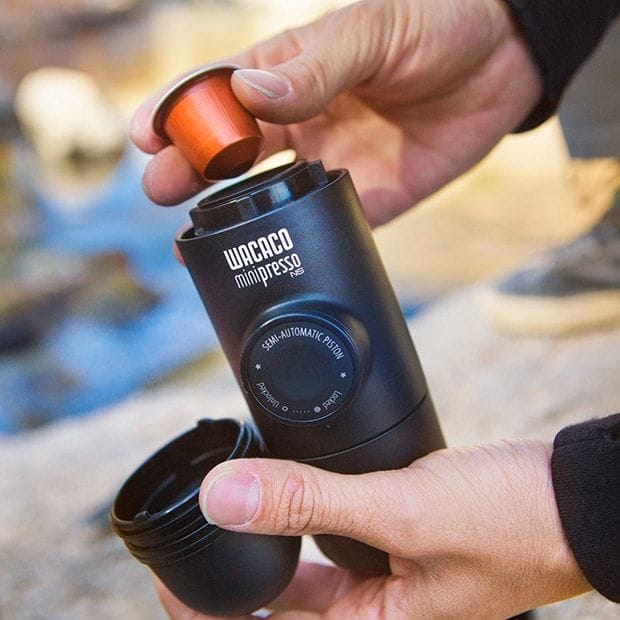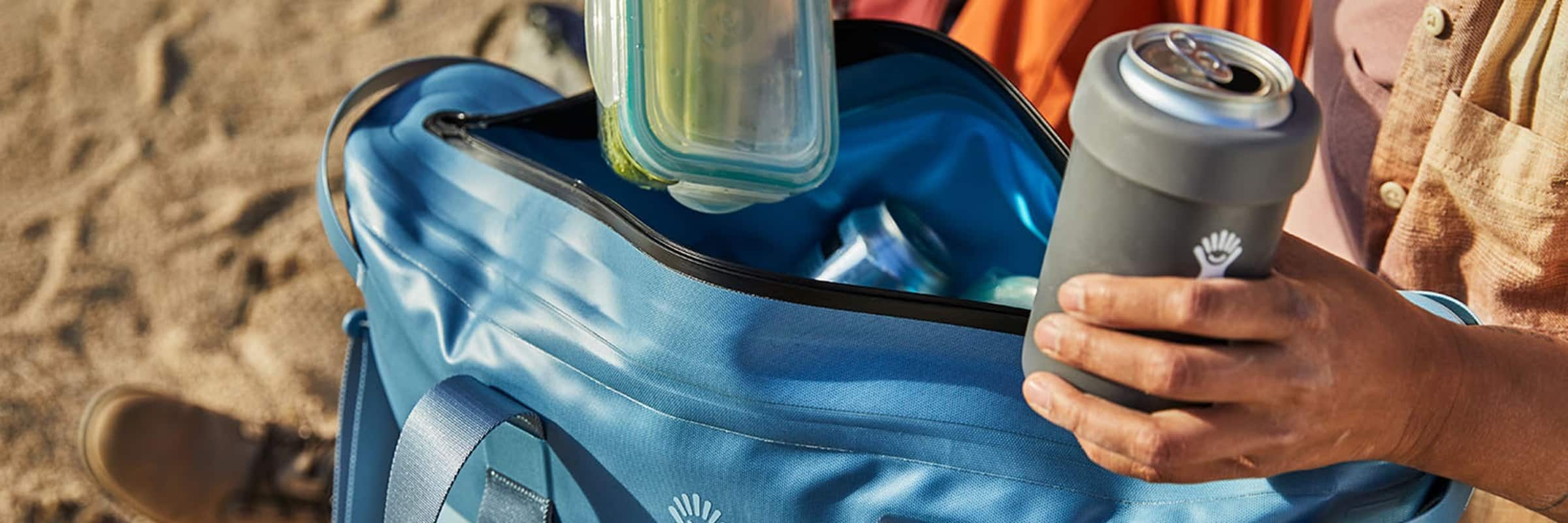Understanding the different types of backpacking water purifiers and filters is paramount when planning your next adventure. With so many options on the market—from gravity and squeeze filters to pumps and straws to UV purifiers and drop solutions—it can be hard to make an informed decision.
To make things easier, we’ve curated a selection of our favourite water purifiers and filters. Whether it’s an emergency-use LifeStraw, a Katadyn Gravity Microfilter, or just good, old purification tablets, we’ve got all your water filtration needs covered!
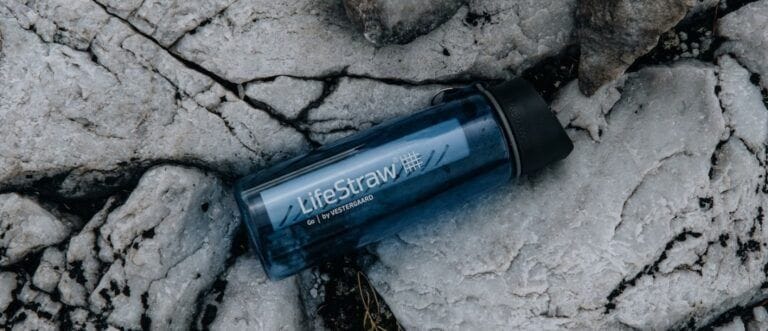
Things to consider before buying a Camping Water Filter
1. Filters vs. purifiers
When backpacking or on an outdoor expedition, sourcing safe drinking water can be problematic. It may look like clean water, but hours later you could be dry retching or having the runs. It won’t be pretty—especially if you’re halfway through a long hike and far from any civilization.
Simply put, a water filtration unit removes waterborne bacteria and organisms, but not viruses. A water purifier, on the other hand, removes bacteria, organisms, and viruses, providing greater insurance against dirty water.
2. Effort and ease of use
Water pump filters take more time to set up than most other water filtration options, and you need to have relatively strong arms.
In contrast, a gravity water filter relies on the passive movement of water through several filtration layers. Simply connect the filtration unit and hang it from a tree branch or large rock. Within a couple of minutes, you’ll have delicious filtered water thanks to Sir Isaac Newton.
3. Speed
When you run out of water and you’re in a rush, the time it takes to purify or filter water can feel like an eternity—especially if you decide to go the traditional route of boiling water in your camping kettle.
On the flip side, the Steripen Ultralight UV Water Purifier only takes 90 seconds to kill 99.9% of bacteria, protozoa, and viruses in a litre (1.1 quarts) of water.
Impatient hikers will often opt for a squeeze filter because it quickly filters a small amount of water, but patient campers that want large volumes should opt for a high-volume gravity filter.
4. Capacity
The volume of water that can be filtered at the same time varies from one litre (1.1 quarts) per minute, such as with the MSR MiniWorks EX Microfilter, to three litres (3.2 quarts) per minute, like with the Platypus QuickDraw Microfilter System.
So, ask yourself: Do you need water for you and all your camping buddies, or just yourself? Your answer should influence your water filter choice.
5. Maintenance
For quick and easy maintenance, consider a filter that has a replaceable cartridge that you throw away each time you use the filter.
Looking for a less wasteful option? The Katadyn Micropur MP1 Water Purifier Tablets are a zero-waste option.
Likewise, the MiniWorks EX Microfilter can be cleaned repeatedly for full filter recovery with no tools required. Gravity filters are also a great low-maintenance option, with a required backflush after a certain volume of filtered water, specified in the care instructions of your model.
Pro Tip !
Cold outside? Sleep with your water filter while camping.
When you’re camping in cold temperatures, filters are liable to freeze. To avoid this unwanted conundrum, consider sleeping with your filter—that’s right, inside your sleeping bag! This will keep your filter from freezing and possibly breaking.
Alternatively, if you’re winter camping, you can opt to melt snow to make drinking water, just make sure to boil it first.
6. Lifetime
The lifetime use of outdoor filters varies from about 1,000 to 8,000 uses. When looking for backpacking water filters, the higher the number of uses the better. For example, the LifeStraw Water Filter filters up to 1,000 litres (264 gallons) of water, which works out to be about 1,333 uses if each bottle is 750ml (0.792 quart).
7. Weight and Bulkiness
When hiking, the general rule of thumb is the lighter the better. That’s why the LifeStraw Water Filter is ideal, weighing in at an impressively light 57g (2 ounces). The MSR MiniWorks EX Microfilter is considerably more bulky due to its many parts, but if you’re car camping with no services it might be worth the extra weight given the large volume of water it can filter at once.
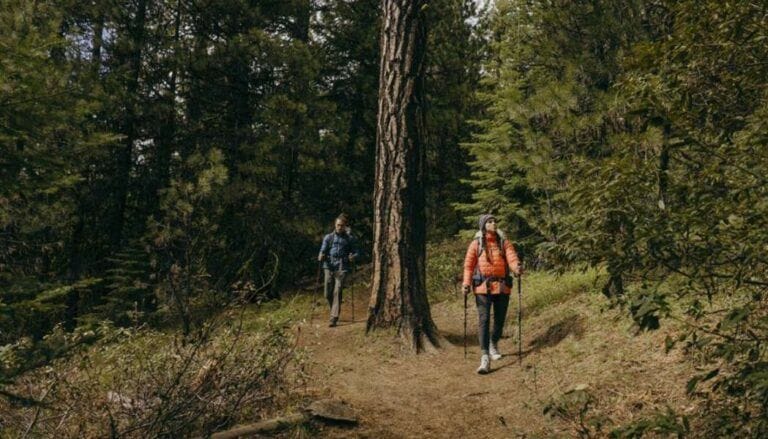
TYPES OF BACKPACKING WATER FILTERS
- Lorem ipsum dolor<\/li>
- Lorem ipsum dolor<\/li>
- Lorem ipsum dolor<\/li><\/ul>","_id":"4105536"},{"feature":"
- Lorem ipsum dolor<\/li>
- Lorem ipsum dolor<\/li>
- Lorem ipsum dolor<\/li><\/ul>","_id":"4467dba"}],"single_product_id":"","cta_1_url":null,"cta_2_url":null,"credit":"","limit":null,"collection_link":null}
1. Gravity Filters
A gravity backpacking water filter is as its namesake implies: a simple yet effective backpacking water filter that can be hung from a tree branch or tent pole. A dirty water bag is connected through a hose to a filtered water bag. The hose itself contains the actual water filtration unit.
There are many benefits to using a gravity filter: they’re easy to use, they remove chunky bits of debris, and they’re fairly fast when it comes to filtering high volumes of water. If you’re filtering water for the whole family, gravity filters are your new best friend on backpacking trips.
The Platypus GravityWorks 2.0L Complete Kit makes the process of filtering water effortless. It holds up to four litres (one gallon), it’s lightweight at only 325g (11.5 ounces), and it packs into a small bag. Plus it pumps 1.5 litres (1.6 quarts) per minute.
- Lorem ipsum dolor<\/li>
- Lorem ipsum dolor<\/li>
- Lorem ipsum dolor<\/li><\/ul>","_id":"4105536"},{"feature":"
- Lorem ipsum dolor<\/li>
- Lorem ipsum dolor<\/li>
- Lorem ipsum dolor<\/li><\/ul>","_id":"4467dba"}],"single_product_id":"","cta_1_url":null,"cta_2_url":null,"credit":"","limit":null,"collection_link":null}
2. Pump Filters
A pump filter is another favourite on backpacking trips. Pump filters work through simple mechanical action: Simply squeeze the device to transform unfiltered water into filtered water. The advantages of a pump filter is that it physically traps most waterborne nasties and it’s easy to use. If you have strong arms it’ll be even easier. And, if you don’t, it’ll at least be a good workout.
The MSR MiniWorks EX Microfilter is capable of pumping one litre (one 1.1 quart) per minute. The MiniWorks EX removes unpleasant tastes and odours caused by organic compounds, such as iodine, chlorine, and pesticides. It weighs a mere 456 grams (16 ounces) and is only 7 cm (2.8 inches) in length.
- Lorem ipsum dolor<\/li>
- Lorem ipsum dolor<\/li>
- Lorem ipsum dolor<\/li><\/ul>","_id":"4105536"},{"feature":"
- Lorem ipsum dolor<\/li>
- Lorem ipsum dolor<\/li>
- Lorem ipsum dolor<\/li><\/ul>","_id":"4467dba"}],"single_product_id":"","cta_1_url":null,"cta_2_url":null,"credit":"","limit":null,"collection_link":null}
3. Ultraviolet (UV) Purifiers
An ultraviolet (UV) water purifier treats unsafe water with germicidal ultraviolet light. Ultraviolet radiation renders bacteria, viruses, parasites, and fungi unable to replicate by damaging the nucleic acids of their DNA.
The advantages of a UV water purifier are that it produces clean water without chemicals, leaves behind no taste or odour, is easy to maintain, and doesn’t cause any waste.
The Steripen Ultralight UV Water Purifier is effective against bacteria, protozoa, cysts and viruses. It produces one litre (1.1 quart) of water over 90 seconds, it’s super lightweight at only 76g (2.7 ounces), and can produce water for up to five people. Perfect for family camping or backpacking trips, especially since it’s about as big as a Sharpie marker.
- Lorem ipsum dolor<\/li>
- Lorem ipsum dolor<\/li>
- Lorem ipsum dolor<\/li><\/ul>","_id":"4105536"},{"feature":"
- Lorem ipsum dolor<\/li>
- Lorem ipsum dolor<\/li>
- Lorem ipsum dolor<\/li><\/ul>","_id":"4467dba"}],"single_product_id":"","cta_1_url":null,"cta_2_url":null,"credit":"","limit":null,"collection_link":null}
4. Bottle Filters
A water bottle filter is often a BPA-free bottle that is reusable, with the filter built into the design of the water bottle. This means you can drink filtered water without waiting.
A water bottle filter is ideal for someone who’s in a hurry or busy crushing miles. It’s also great for trail runners.
The LifeStraw Go Filtration stainless steel bottle is 710ml (24 fl oz) and the hollow fibre membrane tech removes 99.9% of protozoa and 99.9999% of waterborne bacteria. Each bottle sold helps a child in a developing country get a year’s worth of safe, clean drinking water through Lifestraw’s Follow the Liters program.
- Lorem ipsum dolor<\/li>
- Lorem ipsum dolor<\/li>
- Lorem ipsum dolor<\/li><\/ul>","_id":"4105536"},{"feature":"
- Lorem ipsum dolor<\/li>
- Lorem ipsum dolor<\/li>
- Lorem ipsum dolor<\/li><\/ul>","_id":"4467dba"}],"single_product_id":"","cta_1_url":null,"cta_2_url":null,"credit":"","limit":null,"collection_link":null}
5. Squeeze Filter
A squeeze filter is exactly what it sounds like it is: Simply fill up the pouch at a stream and then squeeze the bag to filter water into a bottle—it really is that simple.
A squeeze water bottle is a great choice for ultralight backpacking or on multi-day hikes.
The Hydrapak Seeker+ Water Storage Bag with Built-In Filtration 3L can filter 3 litres (101 fl oz) of water and weighs a measly 127g (4.5 oz).
Buyer Christine S. says, “Tried it out this past weekend and loved it. 3L was perfect to fill up my 2x1L water bottles and still have some for supper and breakfast. Nice and small and light.”
- Lorem ipsum dolor<\/li>
- Lorem ipsum dolor<\/li>
- Lorem ipsum dolor<\/li><\/ul>","_id":"4105536"},{"feature":"
- Lorem ipsum dolor<\/li>
- Lorem ipsum dolor<\/li>
- Lorem ipsum dolor<\/li><\/ul>","_id":"4467dba"}],"single_product_id":"","cta_1_url":null,"cta_2_url":null,"credit":"","limit":null,"collection_link":null}
6. Straw Filters
Straw Filters are water purification straws that prevent you from drinking bacteria, microplastics, and protozoa.
A straw filter is perfect for camping, backpacking, and hiking, as well as for first-aid and emergency kits. Straw filters are also extremely compact and lightweight, making them a no-brainer to carry in on backpacking trips in the woods.
The LifeStraw Water Filter converts 1,000 litres (264 gallons) of contaminated water into safe drinking water. This straw filter also fits perfectly in your pocket as it weighs just 57 grams (2 oz) and measures 22.5 cm (9 inches).
- Lorem ipsum dolor<\/li>
- Lorem ipsum dolor<\/li>
- Lorem ipsum dolor<\/li><\/ul>","_id":"4105536"},{"feature":"
- Lorem ipsum dolor<\/li>
- Lorem ipsum dolor<\/li>
- Lorem ipsum dolor<\/li><\/ul>","_id":"4467dba"}],"single_product_id":"","cta_1_url":null,"cta_2_url":null,"credit":"","limit":null,"collection_link":null}
7. Chemicals
Chemical water treatments often come as drops or tablets that you simply add to water and let sit for a couple of minutes (depending on the volume of water). They are effective against bacteria, viruses, and protozoa.
This water treatment method is super easy to use, inexpensive, and oh so ultralight, making it the perfect go-to for pretty much any adventure, from thru-hiking to car camping.
But, of course, this is a purification system, meaning it won’t actually filter out the sediment from your muddy water.
So a pre-filter or a piece of cloth might be required depending on your water source. If you’re taste-sensitive, you might find that it leaves a chemical taste. But eh, at this price point, it’s hard to beat!
Pro-tip!
Always keep a chemical water treatment tab on you.
Consider always carrying a chemical water treatment in your hiking backpack or on the trails while mountain biking. It can be a lifesaver if your primary water filter happens to break or if you get lost and run out of water filtration supplies.
- Lorem ipsum dolor<\/li>
- Lorem ipsum dolor<\/li>
- Lorem ipsum dolor<\/li><\/ul>","_id":"4105536"},{"feature":"
- Lorem ipsum dolor<\/li>
- Lorem ipsum dolor<\/li>
- Lorem ipsum dolor<\/li><\/ul>","_id":"4467dba"}],"single_product_id":"","cta_1_url":null,"cta_2_url":null,"credit":"","limit":null,"collection_link":null}
8. Boiling
Boiling water is about as old-school as it gets when it comes to water purification. This method kills microorganisms such as bacteria, viruses, and protozoans that can cause disease. That said, it will not remove harmful substances like chlorine and lead from tap water.
Boiling water is more useful for drinking coffee and tea or for when you run out of filtered and bottled water. The downside of using this water purification method is that you need to let it cool down before drinking.
The Primus Litech Coffee/Tea Kettle is a lightweight yet durable anodized kettle, ideal for a midday refresher or a morning pour-over. It can boil 1.5 L (1.6 Qt) of water, which equals roughly 4 cups at 4 oz a cup. The folding handle conveniently stows away for easy storage and transport.
WATER FILTER FAQ
Q: Do I need a pre-filter to filter water while backpacking?
A: If you have to treat water from a murky source, a pre-filter is a valuable accessory to carry. Pre-filters are required when using a water purifier as it filters out all physical impurities like dust, mud, sand, rust, and silt from dirty water sources.
Q: Can I filter any source of water with a camping water filter?
A: If the water looks dirty or contaminated, stay away from it. Even crystal clear water may have viruses in it. Remember, a camping water filter physically strains out protozoan cysts and bacteria.
Q: Can I use my camping water filter while travelling too?
A: Yes of course, especially if you’re travelling to certain countries where sanitation or water treatment is so-so. It's always good to have a backup, especially during long periods of travel or on multi-day hiking trips.
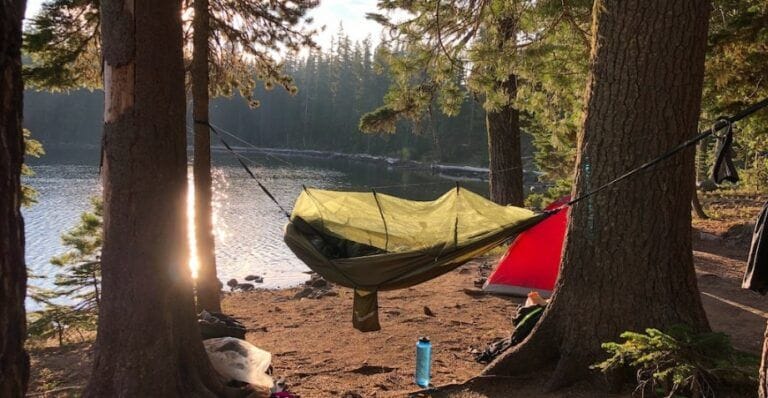
Whether you’re camping with the family or going on an epic seven-day hike with your bestie, drinking safe water should be your number one priority. Therefore, buying a decent water filter or purifier is a worthy investment. Because, seriously—do you really want to be sick and spoil your camping trip? We didn’t think so. Happy trails!


